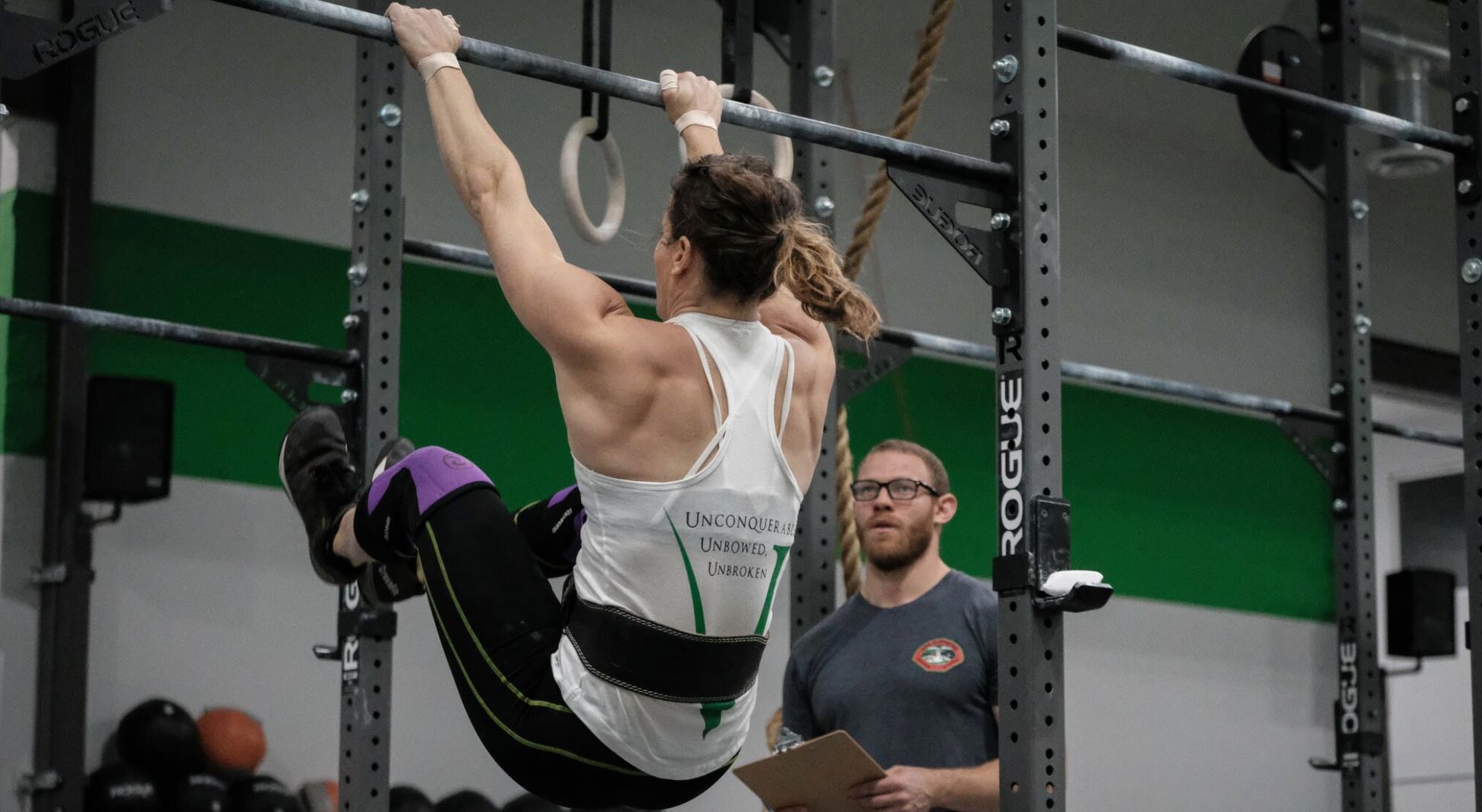

Instead of training to “fail” master your performance by toeing the line but not broad jumping over it.
#Toes to bar crossfit how to#
Workout of the Day 50 Slam Balls (50/25) 25 Toes to Bar 50 Ring Rows The purpose of today’s MetCon is to train how to leave One Rep in the tank instead of going full bore until you hit muscle failure.
Keep the chest up, back tight, and the elbows high when coming out the the squat aggressively drive the elbows up to come out of the hole. The ability to bring the legs towards the torso with strength and great flexibility is essential. Its when you are in your hollow part of the kip that you should pull your knees to your chest and finish off with the toe kick that brings them to the bar. 
We’re looking at core flexion, flexibility, and closed chain handstand stability and strength.
Squat down until the thighs are below parallel. Toes to bar, handstand push ups, handstand walks, and burpees all have crossover with this pattern. Keep the feet flat on the ground pushing down through the heels. Stabilize the midline taking in a deep breath. I accidentally got toes to bar I was just on the bar planning on doing some kipping knee raises and suddenly boom, got a toes to bar. Keep chest up and raise the elbows high. Toes to Bar: Toes to bar are also carried out from the slope on a pull-up bar or the door frame. Receive the bar from the rack on the front of the shoulders and step back onto the platform. Find your grip on the barbell slightly wider than shoulder width. Find your natural foot stance width your feet slightly wider than shoulder width apart and your toes slightly out so your toes can follow the path of your knees. Which is the basis of Kipping movements such as Toe To Bar, Pull Ups and much more. Take time to find your starting position. and strength in the Arch To Hollow Swing. There is typically an increased capacity for maximal lifts with the back squat, as the front squat is ideally 85% of the low back squat in most athletes. Both the back squat and the front squat develop strength and power in the low body but, there are differences in maximal muscular performance. The front squat is by nature a more quadriceps dominant exercise than the back squat and requires more mid-line stabilization, and muscle activity in the hips, and spinal erectors. The front squa t is used primarily to develop the muscles of the low body including the quadriceps, gastrocnemius, and the gluteus maximus. 
Our in house PR board is full this week! Everyone did so amazing. There were so many PR’s (personal record) this cycle that I am so freaking proud. Today we finishing our 5/3/1 Front Squat cycle.







 0 kommentar(er)
0 kommentar(er)
